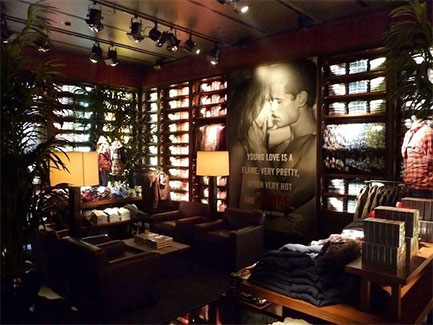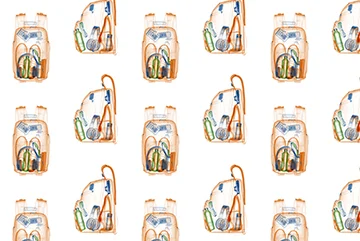Branding & UX: A Tale of Interdependence
Tanvi Purohit /
By definition, an experience is an event or occurrence which leaves an impression on someone. Today, I find that the meaning of the word is becoming increasingly misplaced, at least in the realm of design.
I’m often asked, “So, what do you do?”
It’s a query that ranks between 2 and 5 in the List of Questions We Must Ask an Acquaintance. As a designer, I have the habit of getting into the specifics. A standard followup question was, “Branding? So you make logos?” Currently, I get, “UX? So you make apps?”
A possible inference is that designers are the only ones aware of the implication of branding and UX. To a non-designer, branding is a logo and UX is about apps, often interchangeable with UI. On the surface that may seem alright, but these are thoughts that irk every designer.
As a designer myself, here are my views on the subject(s).
Branding is about creating a unique identity and personality based on positioning, product offering, target audience and values; and extending it across all touch-points, thus building a memorable experience for customers. A customer’s (user’s) experience at every touch-point can make or break the decision to engage with the brand. Thus, the brand should seamlessly translate across all formats. Unfortunately, we often compromise on the seamlessness of a brand story. Clients approach different agencies to craft concepts for different formats, limiting communication. Designers have to consider the gamut of mediums a brand works with, armed only with a brand guide.
Today, the world around us has transformed to taps and clicks and buttons and images. Companies scout for a digital team to ensure that they seep right into their customers’ hands through “UI/UX”. Digital platforms enable brands to gain direct access to their customers. There’s also a considerable opportunity for customer engagement. The web, data and technology in general have opened up a world of possibilities for all involved. But more often than not, there’s a void between the real-world and online presence of a brand, itching to be filled.
UX should not be a concept limited to a screen. It’s an acronym for user experience, and ideally should be treated it that way. Every brand offers an experience for a user who chooses it. In 2013, Abercrombie & Fitch sized down (literally) their target audience. Their product offering included only (overpriced) clothes in small sizes. Mike Jeffries, the then-CEO, claimed that he didn’t want ‘unattractive people’ wearing the brand. This was met with an obvious backlash, with people heavily criticising and boycotting A&F. The brand may have lost a tremendous amount of customers, yet the essence of its personality was in tact. I remember visiting the store in Singapore: a distinct experience owing to the lounge-like atmosphere. Low-lit areas dotted with spotlit showcases, loud music and gorgeous models for attendants. And of course, price tags that make you raise your eyebrows. Everything about the store reeks of unapologetic vanity and luxury. From a brand standpoint, it works, because their store is an extension of its personality (even though it’s not an appealing one).

The same brand personality does not reflect online. Their website looks like any other e-commerce website for clothes. The imagery could very well be that of any high street fashion brand. A&F’s signature black-and-white racy photography is conspicuous by its absence. Black and grey are sparingly used. Not an inkling of the vain, almost disturbing attitude that the brand is notorious for. There’s an obvious disconnect between the real world and the website. The navigation bar is the only element that reminds me of the store – you really have to look to find it. (It’s just plain black text sitting under a deceptive black navigation bar.)
Alternatively, Apple is a brand that offers a wholesome experience. Every touchpoint resonates Apple’s position as a leading technology and lifestyle brand. The brand mark is simple and globally recognised, with nothing yet everything to do with the brand and product offering. Browsing through products online or offline at a retail store enables consumer education. Besides offering stellar service, Apple allows consumers to compare product specifications with ease. Finding your way is simple – through a bold navigation bar on the website and clear signage in the store. Clean open spaces in the brick-and-mortar converts to a minimalistic website interface. The pixel-perfect, powerful imagery on the website reinforces the brand’s strive for excellence. Known to be super sleek and premium, Apple injects a sense of warmth into each of its touch points. On the website, it’s through navigation and photography dotted with a human touch. In the retail store, there’s an expanse of warm grey and white, wooden tables and helpful, smiling staff. And there’s no doubt that unpacking a new product gives you the feeling of immense excitement and joy. Switch it on, and there’s that warm fuzzy feeling when your device says ‘hello’ to you. Of course, the brand is privy to a fair share of criticism, an argument being that it only caters to the elite (just like A&F). But there’s no doubt the brand is a case-in-point for seamless user experience – ask any (of the many) Apple fan boys!

Isolated brand experiences could confuse a potential customer. It’s not just about achieving visual consistency in the logo (hello open files and brand guides!). A user experience is a brand experience – what it makes you see, feel, hear, taste and smell, while leaving an imprint. Branding involves how and why you choose to do those things. One without the other is like pancakes without honey – bland, and a forgettable experience. Definitely not something we should be serving up. Here are a few tips to get the ball rolling.
- Every brand needs to have a personality. And every personality needs to be built. What’s yours? How are you going to go about building it?
- Think about the little things. It’s probably tough (and unheard of) to project yourself as cheerful when you’re a brand that deals with monetary transactions, but even a subtle detail like a smiley face at the end of a receipt might help.
- Think about the big things. You might be working on just an identity, but how would that project itself and its personality on a print ad, packaging and digital interfaces? Design for every possibility.
- It’s not just about the visuals. Think sensorial. Think 360.
- Don’t do something because it’s what everyone’s doing. Your brand doesn’t necessarily need a TVC if you’re catering to millennials. Pump your creativity, time and funds into the right space for your brand.
Remember the definition of an experience? It’s basically a memory. We have to make sure it’s always a good one, like pancakes and honey on a sunny Saturday morning.
References
- The Guardian: Controversial Abercrombie & Fitch CEO Michael Jeffries to retire
- Eight Inc: Apple Store Design





